Okay, so I did part one (a look at the one-two starting pitchers of each NL West squad) a couple of days ago. I figured, with all the hoopla about Jeremy Affeldt and Brian Wilson getting two-year extensions (which I'm not exactly thrilled about), that a look at all the late-inning specialists of each NL West squad was in order. Like before, I'm going to look at every team in the NL West except the Giants. Why not the Giants? Because I'm scouting "Enemy" lines, not "Our Own Team So I Can Expose Them to the Enemy" lines.
Arizona Diamondbacks
Chad Qualls (3.63 ERA, 24 saves, 1.15 WHIP, 7.79 K/9, 6.43 K/BB, 3.14 FIP)
For those who don't know, Qualls is one of the more effective closer in the league. Yes, he played for a lousy team last year. Yes, he blew five saves. Yes, 24 saves doesn't jump out at you like Brian Wilson's 38 saves in 2009 for the Giants.
However, Qualls is effective when he gets the opportunity.
The number that really sticks out in Qualls' favor is his K/BB ratio. I mean...it's incredible. 6.43, and it's compounded by a walk rate of 1.21.
Now, I know most people will say "He'll never get that again!" and you know what? You're probably right. A 1.21 BB/9 will be hard to duplicate. That being said, Qualls has shown plus control over his Major League career. Since his rookie year in 2004, he has never had a walk rate in the three range, and he has had K/BB ratio under three only twice (2005 and 2006 in Houston).
In comparison, Wilson has had a walk rate in the two range only once in his three-year Major League career (2007, where it was 2.66), and has only had a K/BB ratio over three twice in his Major and Minor League career (6.00 in Fresno in 2007 and 3.07 last season).
Qualls doesn't boast intimidating stuff (he averaged 92.9 MPH on his fastball last season), but he mixes up his pitches (he threw his slider 38.7 percent of the time in 2009) and induces a lot of groundballs (he had a 2.53 and a 2.46 GB/FB rate in 2008 and 2009, respectively).
Wilson may have the flashier stuff, but in many ways, Qualls may be the more effective closer.
Scare factor: 8.5 out of 10. (Qualls isn't a big-name closer. That being said, he is incredibly effective, has pinpoint control and gets ahead of batters early (68.2 first pitch strike percentage). He may be closer to Keith Foulke than Mariano Rivera, but if the Diamondbacks get some offense early, Qualls could be in the discussion of the top closers in the Major Leagues by the All-Star break.)
Colorado Rockies
Huston Street (3.06 ERA, 35 saves, 0.91 WHIP, 10.22 K/9, 5.38 K/BB ratio, 2.93 FIP)
Street had a studly 2009 in Colorado. After only saving 18 games in Oakland, and posting a 1.21 WHIP, 3.73 ERA and 3.47 FIP in 2008 with the A's, Street came back with a vengeance in his first season with the Rockies.
Street saved 35 games, but the more impressive numbers were his increases in K/9 (from 8.87 in 2008 to 10.22) and K/BB (from 2.56 to 5.38). Basically, Street went from mediocre to above-average at-best closer to one of the game's top ones in the span of a year as he helped the Rockies win the NL Wild Card berth over the Giants (it still stings by the way).
However, the main question is this: can Street do it again?
The chips will be stacked against Street to repeat his 2009 stats in 2010. For starters, his GB/FB rates aren't comforting (he posted a 0.89 GB/FB rate last year and the only time he had a GB/FB ratio over one was his rookie year in 2005 where it was 1.10), and he also had a very fortunate BABIP at .257 (the second-lowest BABIP of his career, and the lowest since 2005, when it was .251).
The thing about Street is he has three pitches (fastball, slider, changeup) and he mixes them up pretty well (he throws his fastball 53.2 percent of the time, his slider 29.7 percent of the time and his changeup 17.1 percent of the time). However, his velocity isn't great on his fastball (91.7 MPH), and it makes you wonder if he will continue to get away with pitches like he did in 2009.
Considering his luck, and the fact that he is also banged up going into Opening Day, chances are, Street is due for a regression in 2010.
Scare Factor: 7.5 out of 10. (Street was great last year, but he had a lot things fall in the right place. Sure, he strikes out a lot of guys, but his fastball isn't incredible, and his mediocre GB/FB makes his ability to duplicate his 2009 numbers unlikely. Street is still a solid closer, but he won't be one of the league's elite in 2010 like he was in 2009.)
Los Angeles Dodgers
Jonathan Broxton (2.61 ERA, 36 saves, 0.96 WHIP, 13.50 K/9, 3.93 K/BB, 1.97 FIP)
As much as I hate to say it, the Dodgers may have the scariest closer situation out of any rival team in the NL West.
First off, it all starts with Broxton, who finally emerged as the Dodgers closer last year after wrestling for the job with former closer Takashi Saito in 2008 (Saito had 18 saves, Broxton had 14 saves in 2008). Last year, Broxton was a stud. Sure, the 36 saves were impressive, but his other stats really jump out and wow you.
In 2009, Broxton strikeout rate was an incredible 13.50, and he posted a solid K/BB ratio at 3.93 (though his walk percentage could be better than 3.43). Furthermore, Broxton's FIP at 1.97 proved he was the real deal last year, and could have future success. His GB/FB rate was 2.02, the highest of his Major League career (his previous high was 1.66 in 2007), and his BABIP at .285 wasn't excessively below the league average of around .300.
Also, Broxton possesses grade-A stuff. His fastball is absolutely electric, as it averages 97.7 MPH and was consistently in the 100 MPH range in 2009 according to his velocity charts on Fangraphs.
That being said, despite Broxton's improvement as a closer in 2009, there are still some concerns. First of all, he blew six saves last season, and has blown 20 in the past three years. And if that isn't enough, his numbers in high leverage situations isn't exactly comforting either. While his strikeout rates in high leverage situations remained solid (12.65), his walk rate increased (4.10) and his K/BB rate decreased to 3.08 (his K/BB rate in low and medium leverage situations was 3.80 and 5.57, respectively). In addition, Broxton got a lot of help from defense and luck in the crunch in 2009. His BABIP in high leverage situations was .177 (in comparison to a .343 BABIP in low leverage situations and .330 BABIP in medium leverage situations). Whether or not he can duplicate those numbers in 2010 will be tough, especially with Gold Glove second baseman Orlando Hudson now in Minnesota.
Another concern about Broxton is he primarily is a two-pitcher pitcher, relying on his fastball and slider (he threw his fastball 73.7 percent of the time and his slider 24.1 percent of the time in 2009). He does have a changeup, but he hasn't seemed to develop much confidence behind it. In 2008 and 2009, he only threw it 2.7 and 2.2 percent of the time, respectively. While a third pitch isn't mandatory for a closer (Mariano Rivera threw his cutter 93.0 percent of the time last year and hasn't thrown a third pitch over one percent since 2004), it could be a problem should hitters start catching up to his fastball.
However, in the Dodgers' defense, even if Broxton does regress badly, they have plenty of backup options. Hong-Chih Kuo dealt with injury last year (he pitched only 30 innings in 2009 in comparison to 80 innings in 2008), but he still put up solid numbers. While he did regress (mostly due to an elbow injury), he still had a solid K/9 rate at 9.60. Also, it isn't out of the question to think that if Kuo is healthy in 2010, he can return to his 2008 form where he had a 10.80 strikeout rate, 4.57 K/BB ratio and 2.28 FIP. His average velocity actually went up in all of his pitches from 2008 to 2009, including his fastball, which went from 92.9 MPH to 94.7 MPH in 2009.
And it doesn't end with Kuo either. The Dodgers also still have George Sherrill, who used to close out ballgames for the Baltimore Orioles (he had 31 saves in 2008 in Baltimore). I don't like Sherrill as much as Kuo. His FIP (3.21) didn't match well with his ERA (1.70) in 2009 and he benefited from a low BABIP at .268. To make matters worse, he doesn't post great GB/FB ratios (it's been over one only once, in 2005 with Seattle), which means he is susceptible to bad statistics and getting shelled should his BABIP rise. That being said, while I don't trust him as a closer, he certainly is a good third option behind Broxton and Kuo that actually has some closer's experience.
Scare factor: 9 out of 10 (Broxton's scary as it is, but the depth in the bullpen is the bigger concern for Giants fans. If healthy, Kuo has the makings of a future closer and Sherrill is an above-average setup man that can close if needed. I hate to say it because I hate the Dodgers so much, but I might have to admit that the Dodgers have the best late-innings bullpen in the NL West.)
San Diego Padres
Heath Bell (2.71 ERA, 42 saves, 1.12 WHIP, 10.21 K/9, 3.29 K/BB, 2.42 FIP)
Bell's numbers look good. In fact, if you judge him on numbers alone, you could make the argument he was the best closer in the National League West in 2009. He made the All-Star team, he had 40-plus saves, his ERA and FIP numbers were close (29 points isn't too big of a difference), his BABIP was around the league average at .303, and his strikeout rate and K/BB ratio were stellar.
So why can't I get into him more?
For some reason, I just feel I need more information on the guy. Going into 2009 the guy had only two saves out of 14 opportunities. Last year? He only blew six saves (not bad considering he had 48 opportunities). Is Bell just a late bloomer ala Keith Foulke? Or is Bell a one-year wonder ala Billy Koch?
It's just tough to tell on Bell. He isn't bad in any category really. His velocity is good (he averages 93.7 MPH on his fastball), he mixes up his pitches (he throws primarily a fastball, curve ball and slider, mixing up a changeup here and there), induces a good amount of groundballs (1.39 GB/FB rate last year), and he doesn't walk a tremendous amount either (3.10 walk rate last year).
Yet if you ask me, "What Makes Heath Bell a Great Closer?" I really don't know what to say. I would say he isn't bad, that he is going to give you numbers, but for some reason, I wouldn't think he was any better than Broxton, Street or even Wilson. I mean, he's 32-years-old, and he didn't really have a breakout season until last year?
To me, that seems more flukish than telling. I'll be surprised if Bell can duplicate his 2009 numbers again, not only in 2010, but any other year to be frank.
Scare factor: 7 out of 10 (Bell is a solid guy to have on your fantasy team, but in terms of competition, well...I don't know. He just doesn't do it for me. Who knows. Maybe he's just one of those "not sexy but efficient closers" in the Joe Nathan mold. But in my opinion? It was a nice year he had in 2009, but it's not happening again.)
Saturday, March 27, 2010
"Giants" Enemy Lines: A Look at the Closers in the NL West
Subscribe to:
Post Comments (Atom)




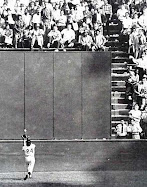
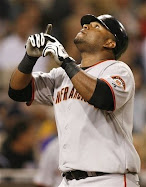
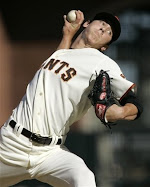
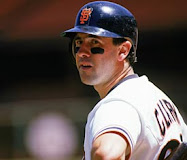
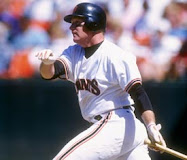
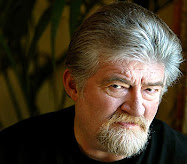

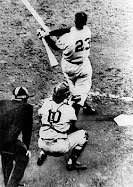
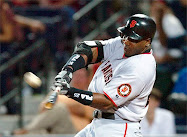
No comments:
Post a Comment